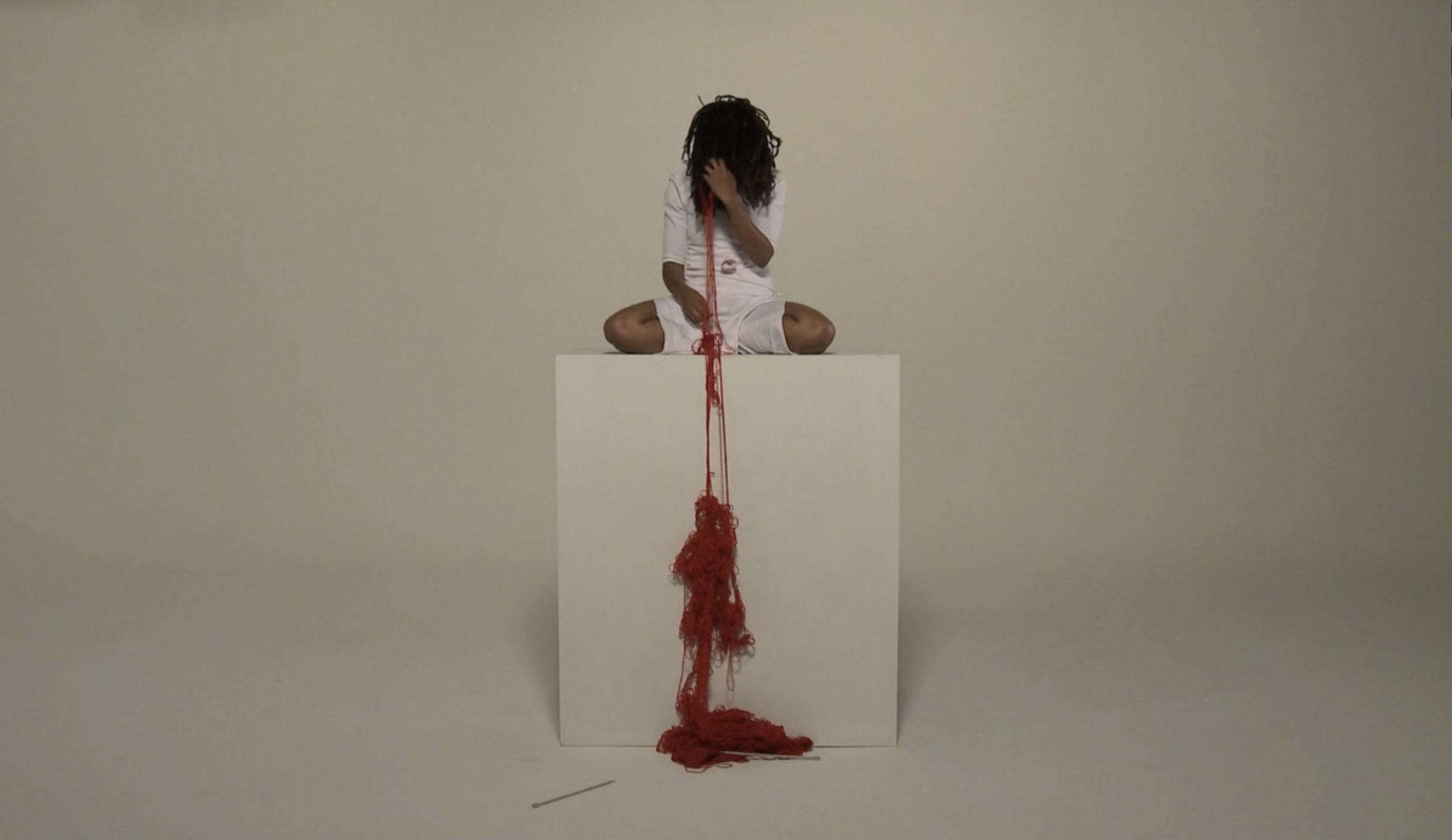FIVE FAVE / PARIS / july 2022
NFT and the ideology of white supremacy
Scott Dread, White Male For Sale, 2021Last year the world learned a new word: NFT the abbreviation of non-fungible token. Before 2021 Google didn’t have enough data to include the term in the Google Trend analytics. Almost overnight, in January 2021 the google search “what is an NFT” hit a new record. It became “Word of the Year”. And in March 2021 graphic designer Mike Winkelmann or Beeple sold and NFT for $69 million at Christie’s auction.
Artist Dread Scott watched the NFT hype hit the world the term ‘fungible’ resonated differently for him: “due to its use by scholars of the history of slavery. People are inherently non-fungible. But as slavery became an integral part of developing capitalism, enslavers sought to make people fungible," the artist states in a press release when Christie's announce the auction of the artist's new conceptual NFT project, White Male for Sale.
Scott's innovative NFT makes the medium itself an inherent and essential part of his conceptual project. The NFT installation is now on display at the exhibition INTERLACED, The Cité internationale des arts. It features a slow motion shot of a generic white male, in typical middle class work shirt and pants, standing, relatively motionless as Black Brooklyn passes by.
Throughout the 16th to 18th centuries the Portuguese and Spanish used a system called Pieza de India ("piece of India") through which people were quantified and valued in relation to an idealized slave--or a "piece of India." Later, in the ledgers of 18th to 19th century American enslavers, people are often referred to as No. 1 slaves, No. 2 slaves, etc.--a means by which unique people could be dehumanized and compared to others, and thus turned into human commodities. For example, a 35-year-old male carpenter could be equated to a 20-year-old, possibly unskilled woman with two children. In other words, slavers attempted to make people fungible.
White Male for Sale takes this history as a point of departure. During much of the history of America, enslaved people were sold at auction. Frequently these auctions would take place on a street corner, with advertisements announcing the sale. The enslaved person would be made to stand on a block as they were auctioned.
In Scott’s artwork it is a white male, this substitution calls into question the whole history of slavery, capitalism and the ideology of white supremacy, with a particular relevance to the US. Extending the conceptual project, the NFT was auctioned, live, at Christie’s auction house in their Postwar to Present auction, October 1, 2021. The auction is part of the NFT and completed the project.
The Cité internationale des arts’
from 03 June to 13 July 2022
2. A call for the brave to carve their own tomorrows
Lerato Shadi’s Mosako wa Nako I, 2022The artist Lerato Shadi speaks of Mosako wa Nako as a red river. It is the product of sixty hours of labour, which Shadi carried out publicly over ten days during the entire National Arts Festival 2016 in Makhanda, South Africa. It is a futuristic work, a call for the brave to carve their own tomorrows while acknowledging the stasis of today. The crocheted object is rendered as a representation of silent narratives and acts as an architectural feature that divides the space.
As M. Neelika Jayawardane states: “In highlighting work that is usually associated with feminised – and therefore often inconspicuous and devalued labour, Lerato Shadi focuses our attention to the meditative quality of her actions. Bringing the experience of meditation into her labour allows her to be present in her body and in the present moment-to-moment of labour, and for us, as her audience, to be similarly mindful in the space”
The Cité internationale des arts’
from 03 June to 13 July 2022
3. FUTURE LULLABY : THE CRADLE OF YESTERDAY, TODAY AND TOMORROW
Blick Bassy, Future Lullaby: the Cradle of Yesterday, Today and Tomorrow, 2022Future Lullaby: the Cradle of Yesterday, Today and Tomorrow is an audiovisual installation by artist Blick Bassy feat. Diana Bouli. The story follows a mother who, from one era to another, waits for that precious and soothing moment every evening, cadenced by the lullabies she shares with her baby. The artwork explores the cultural concept of lullabies and questions the impact of a patriarchal society on ‘motherhood.’
Musée du Quai Branly
MAY 20, 2022 - SEP 25, 2022
2. ecological emergency
KARRABINGFILM COLLECTIVE, The Family and the Zombie (2021) Reclaim the Earth is a wake-up call, as much as a rallying cry. The origins of this collective exhibition can be found in an observation by its scientific advisor, Ariel Salleh: “Bringing ecology, feminism, socialism and Indigenous politics together means giving up the Eurocentric lens for a genuinely global one.” They are both medium and tool – cultural, historic and political vectors being revitalised in a context of ecological emergency. The Family and the Zombie (2021) an installation by KARRABINGFILM COLLECTIVE on the amazing 14 artist at the collective exhibition at Palais De Tokyo. A video featuring Aboriginal children playing in lush green overgrowth that gradually turns into a wasteland. Conceived as a zombie film, the work reveals the toxic dangers of unbridled Western consumption and questions the cultural erasure caused by colonialism. The screening It is surrounded by a landscape of scrap cars, tires, and other postindustrial detritus. This project supports the creation of a cultural heritage area in the Mabuluk (Cape Ford) region in Australia.
RECLAIM THE EARTH, Palais de Tokyo
FROM 15/04/2022 TO 04/09/2022
5. WOMB WISDOM
AMAKABAAND x OLANIYI STUDIO, 2022Founded by the artist Tabita Rezaire in the Amazon rainforest of French Guiana, Amakaba is a center for the wisdom of the body, earth, and sky. Through agriculture, womb wisdom and ancestral knowledge, this home for collective healing weaves together art, science and spirituality to harness and preserve the blessings of the forest. Tabita Rezaire brings there her experience as a doula, yoga teacher, and cacao farmer. Founded by the architect and artist Yussef Agbo-Ola, Olaniyi an innovative design studio that questions how art, architecture, and anthropological research can create experimental environments that challenge the way we experience geological conditions and living ecosystems.
For Reclaim the Earth, Amakaba x Olaniyi Studio collaborate to create a contemplative architecture designed to awaken ecological consciousness. Nono: Soil Temple is conceived as a spiritual entity, a sacred space invoking the healing power of soil, and calls on its ability to transform, nurture and release life through birth and death alike. Nono: Soil Temple is Amakaba’s first medicinal architecture.
In collaboration with the Serpentines Galleries (London).
Tabita Rezaire is represented by Goodman Gallery (Johannesburg/Cape Town/London).t is, the way you tell your story online can make all the difference.




